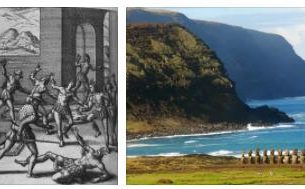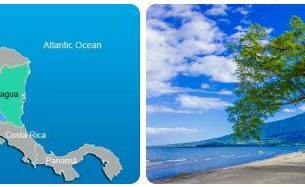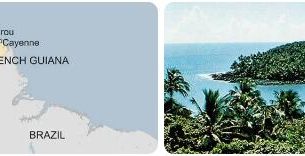Bolivia was named after the South American freedom fighter and the first president of the state “Simón de Bolívar” (1783 – 1830).
The diverse geography of the area has already been referred to as the “mosaic of the earth”.
Bolivia is one of the poorest countries in South America. In 1879, in the course of conflict with Chile, Bolivia lost its 400 km long coastal strip, which had previously belonged to the country and covered an area of around 120,000 km² and was or is rich in mineral resources.
For this reason, March 23 is still a public holiday in Bolivia (Dia del Mar = Sea Day), on which the lost sea is remembered.
After Colombia and Peru, Bolivia is the country with the largest cultivation area of the coca plant, with all the social consequences up to corruption and serious crime.
Juan Evo Morales (born 1959) clearly won the presidential election of December 18, 2005 with around 54% of the votes cast.
Since January 22, 2006, he is the country’s first indigenous president. He is also the chairman of the Bolivian socialist party Movimiento al Socealismo.
In the last election in December 2009, he received 64 percent of the vote.
| Name of the country | República de Bolivía |
| Form of government | Presidential Republic |
| Geographical location | A landlocked country in central South America, surrounded by Argentina, Chile, Brazil, Paraguay and Peru. |
| National anthem | “Bolivianos, el hado propicio” |
| Population | around 11 million (Credit: Countryaah: Bolivia Population) |
| Ethnicities | about 72% Indios, Mestizos, Creoles, Europeans. |
| Religions | About 78% Roman Catholic, also Protestants and natural religions |
| Languages | Spanish, Quechua, Aymará (official languages), Guaraní |
| Capital | Sucre, however, the seat of government is in La Paz |
| Surface | 1,098,581 km² |
| Highest mountain | Sajama with a height of 6,542 m |
| Longest river | Río Beni with a length of about 1,600 km |
| Largest lake | Lake Titicaca with an area of 8,300 km² |
| International license plate | BOL |
| National currency | 1 boliviano = 100 centavos |
| Time difference to CET | -5 h |
| International phone code | +591 It is possible to call from Bolivia with a collect call to Germany.The subscriber in Germany then pays the telephone charges. 800 – 10 – 0049 + area code with 0 + connection number in Germany. |
| Mains voltage, frequency | 220 to 230 volts (La Paz 115 and 230, Viacha 115), 50 Hertz |
| Internet TLD (Top Level Domain) | .bo |
Bolivia: history
Prehistoric times
The high Andes were populated as early as 8,000 BC. Around 7000 BC. the transition to a sedentary way of life began and from 3000 BC people began to grow corn. Around 100 AD, Tiahuanacu civilization developed. From AD 400 to AD 1000, the tribes ruled the central and southern Andean regions. The Aymará Indians are likely descendants of these people. Tiahuanacu went under around 1200 and several principalities developed. These peoples were made up of the warlike Quechua Indians, Allies of the Incas, subjugated in 1470 and their territory became part of the vast Inca Empire, which stretched from the highlands of Peru and Ecuador through southern Colombia to far into Chile. The founder of the empire was the legendary Manko Cápac (around 1200-1230), who supposedly led his tribe from Lake Titicaca to Cusco. Under Pachacuti Inca Yupanqui(1438-1471) the empire expanded. The Inca invaded Bolivia. Their empire likely included more than 12 million people in over a hundred ethnic groups. 20,000 kilometers of paved roads and precise stone architecture testify to impressive technical and organizational achievements. The state structure was geared towards the priest-king, who was regarded as the son of the sun god. Under him stood the priestly caste and the nobility.
Rule of the Spaniards 1559 to 1825
According to Abbreviationfinder website, during the conquest of the Inca Empire (1532-1538), the Spaniards occupied Bolivia. The conquistadors called it “Upper Peru”. In 1559 the country was incorporated into the viceroyalty of Peru as the “Audiencia von Charcas” and Potosí became the richest city in Latin America in terms of population most important colony of the Spanish Crown in the New World. The source of the country’s wealth was the rich mineral resources of silver in Potosí. The Spaniards forced the Indians to work in the mines for one year every seven years. These cruel methods forced the Highland Indians to flee and did not come to an end until the resources were exhausted around 1700. The country’s economic decline began and Lima no longer remained the only overseas port allowed to trade with Europe. In 1739, Upper Peru became part of the viceroyalty of La Plata with the later states of Argentina and Uruguay. Internal conflicts in Peru spread to Bolivia, such as the uprising of the Indian leader Tupac Amarú II. (1743-1781), which was not put down until 1781. The independence movement in Bolivia began its struggle in 1809 and was finally victorious in 1825. The royalists were finally defeated in the Battle of Ayacucho (Peru, 1824) by an alliance with the Colombian forces of Simon de Bolívar (1783-1830). 10,000 Spanish soldiers faced 5,800 rebels from Peru, Colombia and Bolivia under General Sucre on the Ayacucho Pampas. Sucres skillful order of battle decided the outcome of the battle within an hour. The Spaniards lost 2,800 men, their opponents only around 600. In the following year the troops of the Alliance liberated Bolivia.
Year 1821 to year 1877
Independence was enforced by the native whites (Creoles). This oligarchy now expanded their economic superiority and a tax was introduced for the Indians. The two-class society was born and the colonial social order was continued. Politically uncertain times began. Civil wars and dictatorships alternated. In 1836 Peru was forced to form a confederation with Bolivia. The Confederación Perú-Boliviana lost the war against Chile from 1836-1839 and was dissolved again in 1839 after the intervention of Argentina and Chile. Only the export of mineral resources promised some prosperity.
Territorial losses from 1878 to 1935
Over the years, Bolivia lost over half of its territory to neighboring countries. After an earthquake in 1878 the Bolivian government demanded a rebuilding tax from the mostly foreign companies in the lucrative saltpetre business. The Chilean government took this as an opportunity to invade Peru and Bolivia. Bolivia lost the province on the Pacific coast (Atacama Desert) and thus access to the sea. In the war against Chile, allied with Peru, Bolivia quickly had to cope with a bitter defeat. It left the alliance after the victory of Chilean troops (“Batalla de La Alianza”) over the Peruvian-Bolivian army at Tacna and limited itself to securing access to the Bolivian army Highlands, which allowed the Chilean troops to turn to Peru alone.
The enemy Chile destroyed part of the Peruvian fleet in the sea battle near Iquique on May 21, 1879 and conquered the Peruvian provinces of Arica, Tacna and Trapacá, which are rich in raw materials. Since this so-called “Saltpeter War ” (Guerra del Pacifíc) there has been the (unfounded) hope that the coastal corridor will be returned and a 1,800-strong Bolivian Navy is still practicing the war at sea. Diplomatic relations with Chile have been reduced to consular contacts. In 1903 Bolivia had to cede the rubber-rich area of Acre to Brazil and from 1932 to 1935 the “Chaco War” raged with Paraguay. Bolivia lost a large part of the Chaco Boreal.
1935 until today
As a result of this defeat, the political influence of the army, which took over the business of government in 1946, 1951 to 1953 and 1964 to 1982, increased. The MNR (M ovimento N ational Revolucinario) under its chairman Victor Paz Estenssoro (1895-1979) overthrew the military government several times (1952-1956, 1960-1964 and 1982-1989). Their program, land reform, nationalization of the tin mines, the right to vote for the Indians, came into conflict with the military. A small guerrilla group received international attention in 1966 for being led by Che Guevara was directed. The Cuban freedom fighter from Argentina and former minister in Cuba tried to bring the revolution to Bolivia, the poorest country in Latin America at the time. The rural population he courted did not support him or his men. Che Guevara was captured after a battle in 1967 and executed the day after. From 1971 to 1978 Hugo Banzer Súarez set up a military dictatorship that banned all opposition. Disenchanted by the economic crisis in Latin America in the 1980s, the military returned power to the democratic parties. The 1985 presidential election winner Victor Paz Estenssoro of the MNR started with a rigorous austerity policy and achieved economic consolidation with a high unemployment rate. All subsequent governments continued the austerity policies. The austerity measures demanded by the International Monetary Fund to curb foreign debt led to much unrest among the population. When the government decided to exploit the national gas reserves in US corporations in 2003, a popular uprising broke out. After the military was used against the demonstrators and over 60 people were killed, President Gonzalo Sánchez de Lozada had to go into exile in the United States to avoid being charged. As is so often the case in Latin America, the discussion about the renationalization or privatization of natural resources continues.
In the early presidential elections on December 18, 2005, Juan Evo Morales Ayma (born 1959) clearly won this election with around 54% of the vote. The socialist Morales is the first indigenous president of the country after taking office on January 22, 2006. He is the leader of the Bolivian socialist party Movimiento al Socialismo (MAS) and the movement for the rights of coca farmers. In the election on December 6, 2009, he even won 63% of the vote.



